Refresher course in carburetors
MrFurious
Jeeper
- Posts
- 37
- Thanks
- 0
- Location
- NW Ohio
- Vehicle(s)
- 1979 CJ5 AMC 304 T150 Dana 20 Wide-Trac Dana 30/Dana 44
It's been a LONG time since I'm messed around with a carburetor on a car, and now I'm in need of a refresher course in vacuum etiquette since the PO of my CJ5 left me a real mess and I just changed from a MC2100 to a MC2150 and not everything is the same.
Here's what I found for a stock vacuum diagram.

Presently the only real (functional) vacuum line connected to the carb is the one running from the base plate of the carb to the vacuum advance on the distributor (no spark CTO switch). The PVC port and the front manifold port (shown as manifold vacuum above) are just connected to one another forming a loop. The only other connected line is the TAC signal port which is connected to the rear upper port on the back of the carb (to inside of air filter), though I don't think this is correct.
That leaves me with 4 unused vacuum ports on the carb.
- Large port on top of float bowl
- Small port on bottom of power valve cover (old carb didn't have this)
- Small port on bottom drivers side of carb
- Large port on rear bottom of carb
So my question is what's supposed to run to these unused ports, if anything?
In the factory diagram, it looks as if the PVC hose should run to the large port on the bottom rear of the carb. Should I "T" this into the current loop, or run the PVC direct to it and just cap off the front manifold port since I don't have the air pump, diverter valve or spark CTO switch?
The bottom two front ports (marked S & E in the above diagram) appear to be looped via the EGR CTO switch. I don't have an EGR (blocked with plate) or the CTO switch, so should I loop these two with a "T" to the distributor or just leave the one plugged as it is now?
I'm guessing the large port on the top front of the carb would be to supply vacuum to a power brake booster. If that's truly the case I'll just cap it, but want to make sure it's not supposed to connect elsewhere.
No clue where the small port on the bottom of the power valve cover is supposed to connect to as it's not shown in the factory diagram.
Here's two pic's showing my current setup to make it easier to visualize.


Here's what I found for a stock vacuum diagram.

Presently the only real (functional) vacuum line connected to the carb is the one running from the base plate of the carb to the vacuum advance on the distributor (no spark CTO switch). The PVC port and the front manifold port (shown as manifold vacuum above) are just connected to one another forming a loop. The only other connected line is the TAC signal port which is connected to the rear upper port on the back of the carb (to inside of air filter), though I don't think this is correct.
That leaves me with 4 unused vacuum ports on the carb.
- Large port on top of float bowl
- Small port on bottom of power valve cover (old carb didn't have this)
- Small port on bottom drivers side of carb
- Large port on rear bottom of carb
So my question is what's supposed to run to these unused ports, if anything?
In the factory diagram, it looks as if the PVC hose should run to the large port on the bottom rear of the carb. Should I "T" this into the current loop, or run the PVC direct to it and just cap off the front manifold port since I don't have the air pump, diverter valve or spark CTO switch?
The bottom two front ports (marked S & E in the above diagram) appear to be looped via the EGR CTO switch. I don't have an EGR (blocked with plate) or the CTO switch, so should I loop these two with a "T" to the distributor or just leave the one plugged as it is now?
I'm guessing the large port on the top front of the carb would be to supply vacuum to a power brake booster. If that's truly the case I'll just cap it, but want to make sure it's not supposed to connect elsewhere.
No clue where the small port on the bottom of the power valve cover is supposed to connect to as it's not shown in the factory diagram.
Here's two pic's showing my current setup to make it easier to visualize.





